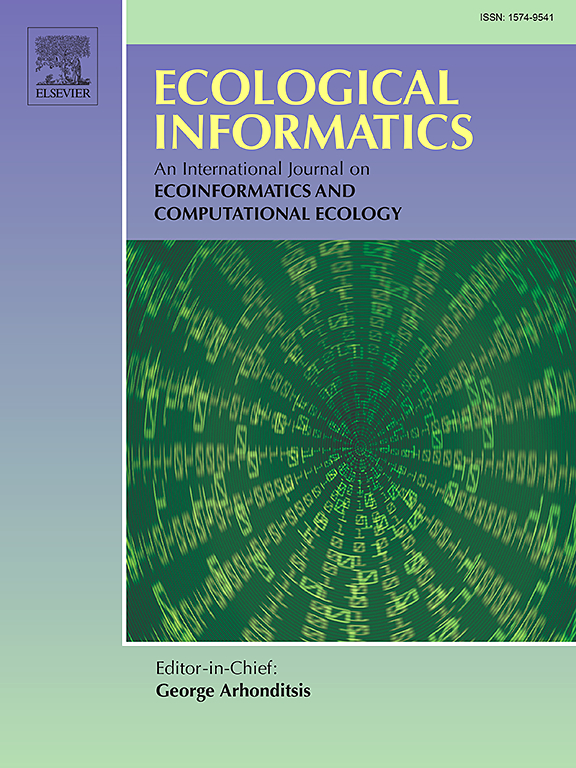Detection of anthropogenic noise pollution as a possible chronic stressor in Antarctic Specially Protected Area N°150, Ardley Island
IF 5.8
2区 环境科学与生态学
Q1 ECOLOGY
引用次数: 0
Abstract
Anthropogenic noise pollution is emerging as an important environmental stressor with the potential effect of disrupting natural ecosystems, since many taxa rely on acoustic signals for social interaction and communication. Antarctic wildlife is increasingly experiencing the impact of growing human presence on the continent, especially near populated areas such as research stations. Until now, most studies on the sound impact in Antarctica have focused on marine ecosystems, with a clear paucity of studies at the level of terrestrial environments. In this study, we analyze the presence of a specific anthropogenic sound source, a power generator, in the soundscape of the Antarctic Specially Protected Area (ASPA) N°150, Ardley Island. We used Audiomoth recorders to hourly monitor the soundscape in Ardley Island and create a simple yet effective detection method based on spectral features of the source. We cross-validate the detection algorithm with human perception classification of the source presence in the recordings, obtaining a Pearson correlation coefficient of 0.61 between the two methods. Further, we relate the detection with wind velocity and direction, concluding that under certain meteorological conditions, the source can be clearly heard from Ardley. Our results suggest that the soundscape of Ardley Island is altered by the near presence of an anthropogenic noise source which could represent an impact on animal life in the ASPA. We consider this kind of study to be relevant in bringing awareness of noise pollution in Antarctic ecosystems and improving management plans in the ASPAs.

阿德利岛南极特别保护区N°150人为噪声污染可能的慢性应激源检测
人为噪声污染正成为一个重要的环境压力源,具有破坏自然生态系统的潜在影响,因为许多类群依赖声信号进行社会交往和交流。南极野生动物正日益受到人类在这片大陆上日益增长的存在的影响,尤其是在研究站等人口稠密地区附近。到目前为止,关于南极洲的声音影响的大多数研究都集中在海洋生态系统上,显然缺乏陆地环境一级的研究。在这项研究中,我们分析了在阿德利岛N°150南极特别保护区(ASPA)声景观中存在的特定人为声源,即发电机。我们使用Audiomoth记录器每小时监测Ardley岛的声景,并基于声源的频谱特征创建了一种简单而有效的检测方法。我们将检测算法与录音中源存在的人类感知分类进行交叉验证,两种方法之间的Pearson相关系数为0.61。此外,我们将探测与风速和风向联系起来,得出结论,在某些气象条件下,可以清楚地听到来自Ardley的源。我们的研究结果表明,人为噪声源的存在改变了阿德利岛的声景观,这可能代表了对ASPA动物生活的影响。我们认为,这类研究有助于提高人们对南极生态系统噪音污染的认识,并改善南极保护区的管理计划。
本文章由计算机程序翻译,如有差异,请以英文原文为准。
求助全文
约1分钟内获得全文
求助全文
来源期刊

Ecological Informatics
环境科学-生态学
CiteScore
8.30
自引率
11.80%
发文量
346
审稿时长
46 days
期刊介绍:
The journal Ecological Informatics is devoted to the publication of high quality, peer-reviewed articles on all aspects of computational ecology, data science and biogeography. The scope of the journal takes into account the data-intensive nature of ecology, the growing capacity of information technology to access, harness and leverage complex data as well as the critical need for informing sustainable management in view of global environmental and climate change.
The nature of the journal is interdisciplinary at the crossover between ecology and informatics. It focuses on novel concepts and techniques for image- and genome-based monitoring and interpretation, sensor- and multimedia-based data acquisition, internet-based data archiving and sharing, data assimilation, modelling and prediction of ecological data.
 求助内容:
求助内容: 应助结果提醒方式:
应助结果提醒方式:


